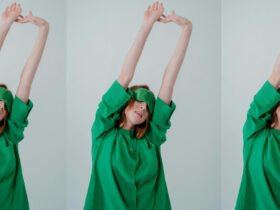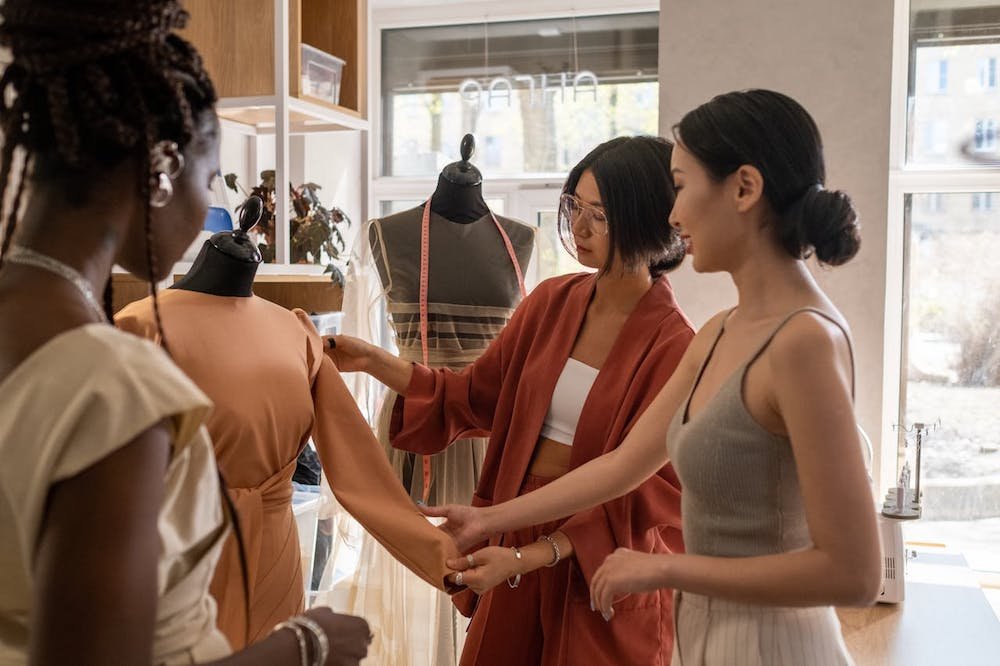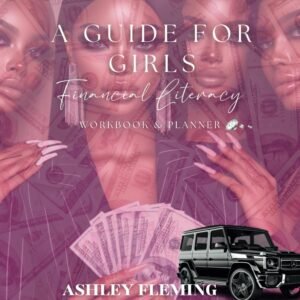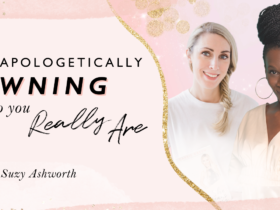
The fashion industry is filled with glory and dynamic opportunities with outlets for creative expression. Women have historically been integral in developing fashion trends and styles. For any woman eager to become a fashion designer herself, the fashion world presents abundant openings to be creative and convey one’s identity through design. This guide aims to assist aspiring female fashion designers in charting their career trajectory in this lively, fast-paced industry.
Introduction: The Alluring World of Fashion Design
The Ever-Evolving Landscape of Fashion
Fashion encompasses more than simply attire; it represents culture, individuality, and evolution. With every collection launched, designers are the ones who set the fashion trend. It is a place where things can always change, always something else fresh to give and bring with it style exploration. The new trend will always be about what is happening in society, and that is where designers get their views from, along with fashion.
Why Women Dominate the Fashion Industry (Statistics)
Women have always played an important role in shaping fashion. Women have made major contributions to the fashion industry, from legendary figures like Coco Chanel, Chloé D, and Vera Wang to modern designers such as Stella McCartney. Women’s lives continue to change, and, rightly or wrongly, fashion is an undeniable influence. Fashion relies on creative flair, instinctual awareness, and grasping changes in culture, strengths that women naturally possess.
Statistics show that women make up a significant portion of the fashion industry. Women represent over 60% of roles in the fashion industry when it comes to design and production. The sector was worth over $600 billion in 2023 and is expected to grow further, presenting opportunities for aspiring newcomers. There is a high demand for unique, sustainable designs as consumers now prioritize purchasing from brands that are both aesthetically pleasing and ethically conscious. This fact, therefore, shows how women bring something unique to the table which lets them be the drivers of the industry.
Entering into the Industry: the Challenges and Opportunities
Trying to start a career in fashion can feel very confusing and difficult. With so many talented people vying for a limited number of positions, making a name for yourself demands both an innovative spirit and the determination to endure setbacks.
From limited connections to insufficient experience, hurdles are many for aspiring designers. One needs to build a strong network of mentors and peers to navigate through this intricate world. Attend workshops, fashion shows, or even local events to meet like-minded individuals.
There are many possibilities for those open to trying new paths. Social media sites allow up-and-coming talent to display their creations to the world. One should start thinking about creating an online persona that exhibits their own style.
Moreover, trends shift rapidly; staying updated on popular pieces like trending hoodies can help you connect with what customers are interested in right now. Be open to new ideas but stay committed to your own vision – finding this balance can help your business stand out in a competitive market where unexpected opportunities and innovations frequently arise.
Essential Skills for Aspiring Female Fashion Designers
Technical Skills: Pattern Making, Sewing, and Draping
Mastering technical skills is crucial for any fashion designer. A fashion designer needs to know technical aspects like pattern drafting, stitching methods, and manipulating fabric around forms. With every technical skill in this area, one is able to build the garment structures with beautiful fittings.
Creative Skills: Sketching, Design Thinking, and Trend Forecasting
Creativity is what differentiates one designer from another. You can sketch your ideas into how these pieces would fit together. Furthermore, one can learn how to predict trends for better design processes. Current trends can drive inspiration for work and relevance.
Business Acumen: Marketing, Branding, and Production
Fashion design involves business aspects as well as creativity. Marketing and branding skills allow you to effectively promote your designs to customers. Knowing manufacturing processes helps translate your creative ideas into sellable products while maintaining profitability.
Educational Pathways: Charting Your Course to Success
Formal Education: Fashion Design Degrees and Certifications
Students pursuing fashion design degrees receive comprehensive training. University programs teach design methods, textiles, and fashion history. Additional certifications in specialized skills like pattern drafting can further improve a student’s qualifications.
Alternative Learning Paths: Online Courses, Workshops, and Apprenticeships
Online courses and workshops are flexible alternatives for those not interested in formal education. The fact is that apprenticeship provides the opportunity to be mentored by an established designer and to learn by doing.
Networking and Mentorship Opportunities
Make connections is also opening doors for the industry. Attend fashion shows, join communities for designing, and actually seek the mentorship of an established designer. These relationships can offer direction and support your development.
Building Your Brand and Portfolio
Developing a Unique Design Aesthetic and Brand Identity
Establish a really strong brand identity. It should narrate your brand story through images and words. Consider what story you want your logo to tell – aim for something simple yet memorable. Use colors and fonts that fit the personality of your brand. Maintaining consistency in your branding across all channels helps build trust with consumers. Take time to determine which aesthetic styles really speak to you. Developing an unique brand identity can assist in appealing to your target demographic.
Creating a Show-Stopping Portfolio: Showcasing Your Best Work
A well-curated portfolio is a must-have to showcase your designs. Incorporate a diverse selection of works that highlight your abilities and scope. This visual showcase of your creations frequently serves as a prospective employer’s initial glimpse into your talents.
Building an Online Presence: Websites, Social Media, and Online Portfolios
Creating a website has become so important in the online age. Build your website with a portfolio and create social media accounts for engaging followers. So you can even utilize social media like Instagram and Pinterest to showcase your designs and make connections with potential clients.
Breaking into the Industry: Strategies for Success
Networking and Industry Events: Connecting with Professionals
Industry events such as fashion shows, trade fairs, and exhibitions can help you to meet some of the most influential personalities. Networking is very important in fashion, so reach out and communicate.
Internships and Entry-Level Positions: Gaining Valuable Experience
Interning is where you get practical experience before seeking full-time entry-level jobs. These positions often open the door to formal opportunities. Find internship opportunities that interest you and are relevant to your goals.
Freelancing and Contract Work: Building Your Client Base
Freelancing lets you take on assignments of your taste. It helps you build a portfolio and a clientele that is completely diverse. Most designers who become successful begin their careers as freelancers in order to create a name and gain respect in the business.
Conclusion: Your Journey to Fashion Design Success
Key Takeaways and Actionable Steps
- Cultivate your technical and creative skills.
- Build a professional network and develop mentorship ties.
- Establish the self-brand and online presence.
- Gain work experience through internships and freelancing opportunities.
Resources and Further Learning
Look at different online sites for fashion courses, read fashion magazines, and follow fashion designers you admire to get ideas.
Top Inspirational Women Fashion Designers to Look Upon (Examples)
- Coco Chanel: Revolutionised women’s fashion.
- Stella McCartney: Popular for her work with sustainable fashion.
- Rihanna: Designer and pop culture personality.
A career in fashion design offers excitement and challenges. Nurture your creativity, remain committed, and allow your enthusiasm to guide you to accomplishment. Start your journey today!
Full disclosure: She Owns It partners with others through contributor posts, affiliate links, and sponsored content. We are compensated for sponsored content. The views and opinions expressed reflect those of our guest contributor or sponsor. We have evaluated the links and content to the best of our ability at this time to make sure they meet our guidelines. As links and information evolve, we ask that readers do their due diligence, research, and consult with professionals as needed. If you have questions or concerns with any content published on our site, please let us know. We strive to only publish ethical content that supports our community. Thank you for supporting the brands that support this blog.



















Leave a Reply